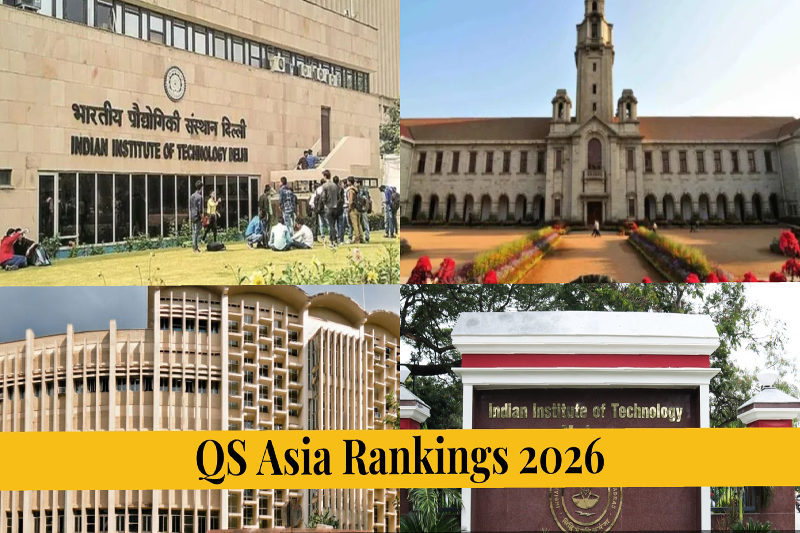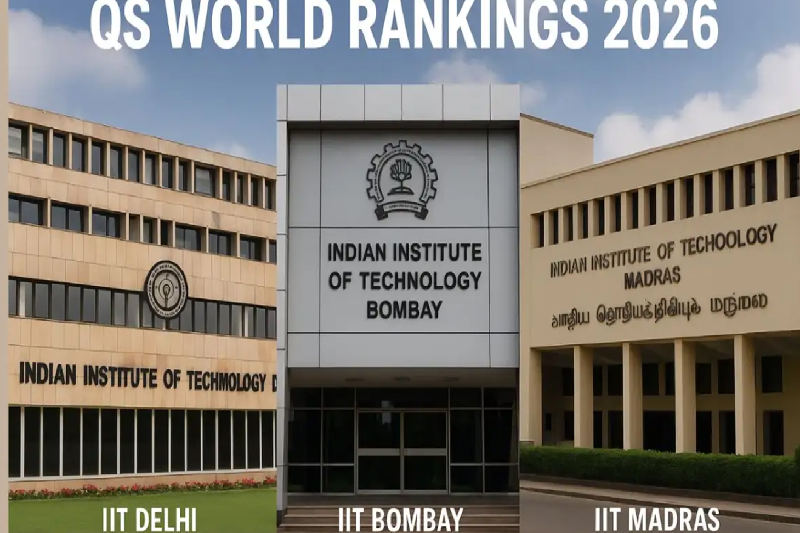
IIT Kharagpur Director Responds to QS Asia Rankings 2026 Drop: “Transformative Impact Isn’t Always Measured in Metrics”
India’s Top IITs Witness a Significant Decline in QS Asia Rankings 2026
India’s premier Indian Institutes of Technology (IITs) have faced a noticeable decline in the QS Asia University Rankings 2026, raising questions about global ranking systems and their evaluation parameters. According to the latest report, seven IITs—which continue to feature among India’s top 10 institutions—saw a sharp fall in their ranks compared to the previous year. Notably, IIT Delhi, IIT Bombay, IIT Madras, IIT Kanpur, and IIT Kharagpur recorded their lowest ranks since at least 2021.
The rankings, released by Quacquarelli Symonds (QS), highlighted an eastward concentration of academic excellence in Asia. Universities in Mainland China, Hong Kong, Singapore, South Korea, and Malaysia are outperforming Indian institutions on several parameters, including citations per paper, faculty-student ratio, and international student representation.
IIT Kharagpur’s Ranking Drop and Director’s Perspective
In the 2026 edition, IIT Kharagpur, ranked sixth among Indian institutions, saw its position fall from 60th in 2025 to 77th in 2026, marking its lowest rank since 2021, when it stood at 58. Despite the drop, IIT Kharagpur Director Prof. Suman Chakraborty urged the academic community to view rankings in the right context, emphasizing that transformative educational impact cannot always be quantified through citation metrics.
“The QS rankings are one of several reference points in a very broad and complex global higher education ecosystem. A movement in ranking, up or down, should ideally be read in context rather than in isolation,” Prof. Chakraborty stated. “IIT Kharagpur has always believed in driving its own metrics of global relevance, those rooted in national priorities and social impact, rather than being limited by conventional yardsticks alone.”
Global Metrics vs. National Mission
Prof. Chakraborty acknowledged that Indian institutions, including IIT Kharagpur, could improve on specific measurable parameters such as faculty-student ratio, international faculty diversity, and citation counts per faculty. However, he asserted that the true challenge lies in aligning institutional growth with India’s national mission, not merely achieving numerical improvements in rankings.
He elaborated, “Many of our faculty are deeply engaged in translational research, rural innovation, entrepreneurship incubation, and public healthcare technologies—activities that create transformative societal impact but don’t immediately reflect in citation metrics.”
This statement underscores the ongoing debate about how ranking frameworks often overlook the social, developmental, and grassroots contributions made by academic institutions in countries like India. While global ranking agencies rely heavily on publication volume, citations, and internationalization metrics, they may fail to capture the depth of indigenous innovation and community-oriented research emerging from Indian campuses.
Commitment to Empowering Indian Youth
Another dimension of IIT Kharagpur’s approach lies in its student demography and social mission. Unlike many global institutions striving for international enrolments, IITs remain focused on empowering domestic students. “Our student body is predominantly domestic by design because we are deeply committed to empowering Indian youth across social and geographic spectra,” Prof. Chakraborty noted.
This focus on inclusivity and accessibility—providing world-class education to Indian students from diverse socioeconomic backgrounds—reflects IIT Kharagpur’s continued commitment to nation-building rather than competing solely on global ranking metrics.
The Road Ahead: Internationalisation and Global Collaborations
While emphasizing a national focus, Prof. Chakraborty also acknowledged the need to internationalize academic collaborations and enhance global exposure. “We are working consciously to internationalize our collaborations, attract globally diverse postdoctoral scholars, and enhance faculty mobility—not just to improve rankings, but to create a more porous, globally networked academic culture,” he explained.
This approach aligns with IIT Kharagpur’s long-term goal of evolving from a “ranked institution” to a “benchmark institution” that sets global standards in research, innovation, and educational inclusivity. The institute aims to establish itself as a leader in shaping the future metrics of academic excellence, particularly those that capture social impact and transformative innovation.
Wider Impact: India’s Ranking Challenge in Asia
The drop in rankings was not unique to IIT Kharagpur. The report revealed that IIT Bombay experienced the steepest fall, slipping 23 ranks, followed by IIT Kharagpur (17 ranks) and IIT Delhi (15 ranks). The collective decline highlights the broader challenges faced by Indian institutions in competing with rapidly advancing Asian counterparts.
According to QS, universities in countries like China, Singapore, and South Korea have been strengthening their international presence and research visibility through high-impact publications, strong government funding, and aggressive global partnerships—factors where Indian institutions are still catching up.
Experts suggest that India’s focus should not only be on improving metrics but also on strategically balancing national relevance with global competitiveness. Building stronger research collaborations, encouraging faculty exchange programs, and improving infrastructure for global students can help Indian institutions regain lost ground.
Redefining Academic Excellence
Prof. Chakraborty’s response reflects a broader philosophical shift—from chasing rankings to creating value-driven academic ecosystems. His assertion that “transformative impact doesn’t always reflect in citation metrics” encapsulates a vision of education that prioritizes innovation, inclusivity, and social progress over numerical prestige.
As IITs continue to contribute to India’s development through cutting-edge research, technology-driven entrepreneurship, and public welfare innovations, their influence extends far beyond what ranking tables can measure.
Conclusion
The QS Asia Rankings 2026 may show a numerical decline for India’s leading IITs, but voices like Prof. Chakraborty’s remind the academic world that education is not a competition for visibility—it’s a pursuit of impact. IIT Kharagpur’s continued focus on societal transformation, rural innovation, and empowering the next generation of Indian technologists reaffirms its role as a pillar of national development and a global benchmark of purpose-driven education.


